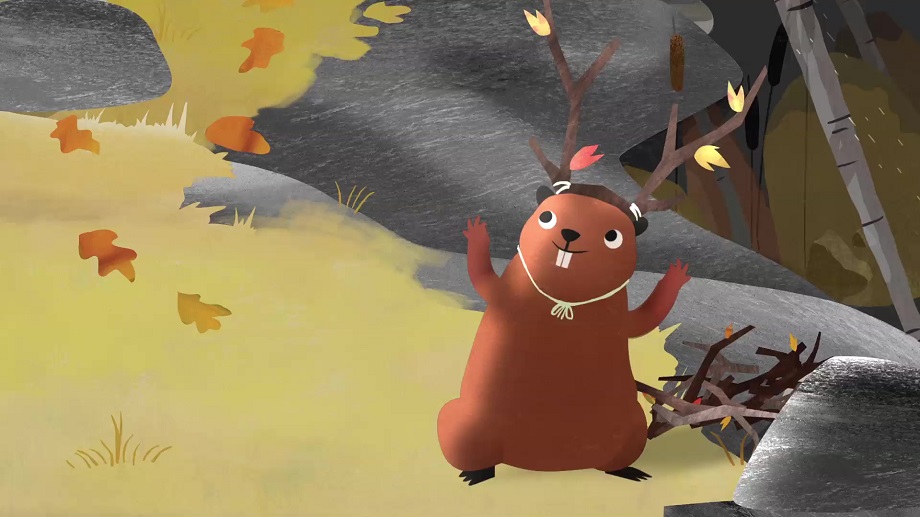When Papa Beaver asks young Kit to help the clan build a dam, she wants to do her best but gets distracted along the way. Any child who has been asked to clean their room can relate. Kit heads into the forest to collect wood but runs into other animals who need help, too. As it turns out, being a good neighbour pays off in the long run.

DAM! The Story of Kit the Beaver is an animated film about the power of empathy, generosity and the mighty river.
“Overall, this film is about finding friendship and kindness in unexpected places,” says Erica Procunier, who composed the original musical score.
“I really wanted to give the listeners that warm fuzzy feeling you get when you do a good deed, or when someone does something kind for you. I really asked myself, how can I translate friendship into music?”
DAM! was commissioned by the Toronto Symphony Orchestra (TSO), in partnership with the Toronto International Film Festival (TIFF), and was funded by the Government of Canada. The film is part of the TSO’s Canada Mosaic project, a Canada 150 Signature Project that includes a strong educational element.
DAM! can be watched online and viewers can toggle between the film, the conductor and the TSO to get an intimate view of how the story comes together. Teachers can download lesson plans for students in grades four to eight.

Get daily National news
The 12-minute film has no dialogue or sound effects, so the music plays a primary role in communicating the message and emotion of the story. Every animal has its own melodic theme with the characteristics of the music matching the movement and identity of the character, Procunier explains.
For example, the chickadee has a high fluttery theme in the flute and piccolo, the dancing worm has its own fiddle-like jig and the moose has a low, lumbering theme in the bassoons. Learning how the music makes their favourite characters come to life is just one way kids can engage in this film.
“I hope the film can connect kids with learning about how the orchestra is used in all different types of media that surround us every day, such as films and video games,” says Procunier.
“If learning about how the orchestra works in film music can inspire kids to start listening deeper and start becoming interested in playing music or even exploring their own creativity with writing stories inspired by orchestral music, or making films or animations themselves, I would count that as a win.”
Last year, the TSO played the score live in concert in perfect timing to the film. It was a challenging experience for the conductor, the musicians and Procunier, and a unique opportunity for the audience.
Busloads of school children were in the audience and after each performance, some of them gave the composer high fives, a heartwarming experience that stays with her. As the film is used in schools, Procunier hopes the positive message reaches more kids and inspires the musicians of tomorrow.
“Music is not only one of the most rigorous ways to engage a developing brain, but it teaches so many lifelong skills,” says Procunier.
“I cannot stress enough how much playing in ensembles and performing in piano recitals in my youth has prepared me for other areas in my life like public speaking, teamwork and collaboration.”
Like building a dam, there’s a lot to be learned from playing music.



